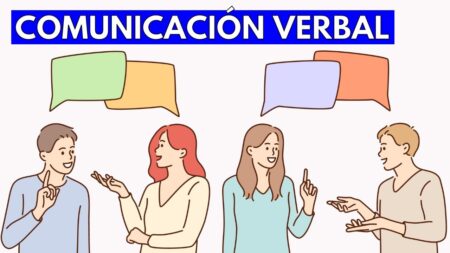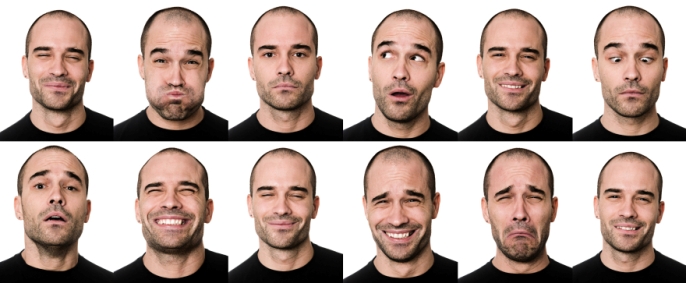Types of Nonverbal communication is very important for every teacher, student and language researcher.Being a language teacher you must understand the kinds of nonverbal communication.We are mainly concerned with visual signals: facial expression, gaze, head and body posture, hand movements, interpersonal distance and spacing; other non-verbal signals such as the intonation and pace of speech, and dress, are covered more briefly. Posture and spacing set the scene for an interaction between people. Under classroom conditions, use of space, personal distance, touch and posture are related. The message they convey depends on what else is happening at the time; they often indicate the intensity with which the main signal is being sent.

Gaze indicates attention and involvement. In most cases people do not look at each other continuously; the appropriate level of gaze varies between situations.Facial expression plays a major role in conveying feelings. It can also be used to indicate to listeners what they should feel about the subject being discussed.
Intonation, like facial expression, can be used to show listeners how they should respond to what is being said. It can convey enthusiasm, authority and so on, but it also plays a major role in stressing the main and subsidiary elements of an explanation or argument. Timing in speech sends similar messages.
Timing between speakers, especially the time a speaker or questionnaire is prepared to wait for a response (wait time), indicates aspects of the relationship such as the degree of respect for the other’s contribution.
Hand movements fall into three main groups: wielding movements such as picking up and moving things, which do not have a communicative purpose; speech-related gestures which convey messages about the subject that is being talked about; and relationship oriented signals. Under classroom conditions many of the latter are signals of dominance or control.
5 Types of NonVerbal Communication Secrets You Never Knew
Gaze:
There are some similarities between the amount of gaze and personal spacing. A child being reprimanded may often look down or away, avoiding your eye, to distance himself from the unpleasant experience.
Most classroom communication requires teacher and child to meet each other’s eye, at least intermittently. Sustained gaze indicates close interest in the other person; like a close approach it can be stressful because you need further cues to interpret whether the attention is friendly or hostile. For this reason you may find the concentrated attention of a class disconcerting, especially if they use the concentration frown, described below.
Facial expression and head position:
Both these sets of signals involve the head; but they are distinct and can be combined in various ways. Expression is the more important.The effects of head position are often the same as those of posture on a smaller scale—a raised chin (‘looking down your nose’), like standing over someone, is dominant; a bowed head, like kneeling down, is non-threatening. A distinctive signal, much used by some teachers, is the ‘head cock’, with the head over to one side, which signifies sympathetic interest.
Research shows that children, from the junior years on, judge whether the overall meaning of a non-verbal signal is friendly or negative primarily from the facial expression. Other aspects, such as gesture and posture, have a subsidiary influence.
Smiling and frowning are the most salient classroom expressions: the frown can cause confusion because it can imply concentration as well as threat or anger. The concentration frown looks exactly like a slight anger frown; the two cannot be told apart without other cues. They look the same apparently because a slight frown helps you see
more clearly, whether what you are looking at interests or annoys you. Pupils may use the concentration frown when listening intently to you, or you may use it yourself, to stress what you are talking about, like the puzzled and surprised expressions described in the next paragraph.
These two common expressions—the puzzled brow and the surprised frown—are often used like gestures, to indicate how the pupils should respond to what you are saying. By using the appropriate brow expression you signal whether what you are talking about requires pupils’ close attention, is difficult to understand, or is interesting and
unexpected.
Intonation:
The most important distinction is between ‘proclaiming tone’, which falls towards the end to the phrase, used for new information, and ‘referring tone’, which falls then rises towards the end, used for what is already known by the listener. In an explanation or a story, proclaiming tone marks the sections which advance the argument, referring tone those which fill in the detail. Children are sensitive to these differences in tone from an early age; preschoolers
can use them appropriately when retelling a story.
It’s All About (The) Types of Nonverbal Communication
Effective teachers have animated intonation; ‘flat’, unenthusiastic speech shows uncertainty. You can manipulate how you use the tones; if you use proclaiming tone repeatedly with the same information, by repeatedly indicating it is new and exciting you may improve the chance of the class actually taking it in. Equally, politicians, for example, use referring tone when talking about something controversial, to imply that all reasonable people accept their view. Other intonation patterns include the measured speech of authority and the hard tone of sarcasm, as well as the meaningful silence.
Gestures and hand signals:
We have grouped speech-related gestures and relationship- or emotion-related hand movements together, though the messages they convey are very different.Speech-related gestures serve two purposes. Firstly they can provide a concordance to the speech, marking out its structure and how it is to be interpreted. Secondly, if they carry some of the message, they force listeners to watch the speaker as well; if they only listen, they will miss part of the meaning. If it is not overdone, this can be an effective way of manipulating pupils’ attention.
Animated speakers use gestures extensively to punctuate their speech (beats) and to illuminate the ideas they are talking about. Some subjects lend themselves to pantomiming (a biology teacher as a gorilla is a vivid memory from thirty years ago).More soberly, talk about shapes (such as the line of the trenches in the First World War,or the shape of a mathematical equation) or movements (such as rocks rolling along and eroding the bottom of a stream) may be illustrated by iconic gestures; the gesturing hand traces out the shape or imitates the movement.
Mathematical ideas (or ideas in other subjects) can be represented by gestures as well as mathematical equations; as ideas have no physical form, these are metaphoric gestures. Mathematics is a precise subject, and this precision is represented by the forefinger-to-thumb precision grip being made in a vacuum. Thumb and finger carefully hold the invisible idea for the class’s inspection.This is only one of a range of gestures which manipulate ideas as objects, to show the audience how they should be handled mentally.
There are various other hand movements which can be described as more relationship oriented. Some, such as nominating whom is to talk next by pointing at them, or holding up a hand to stop them talking, are quick movements related to gesturing; but there is a range of more static hand postures, related to status and confidence.
SUMMARY:
Three broad types of message are sent through non-verbal signals, the most important being messages identifying feelings, both positive and negative. These feelings can be about interpersonal relationships, such as praise, interest or criticism, or about the subject matter of the lesson. Positive and negative feelings are conveyed mainly by facial
expressions, but secondarily by some types of intonation (such as wait time) and gesture, and head and body posture.
